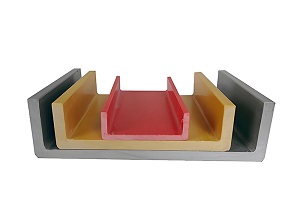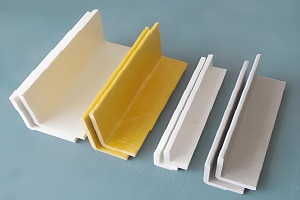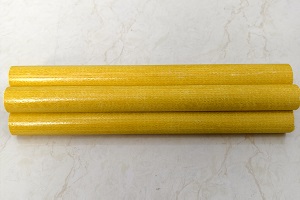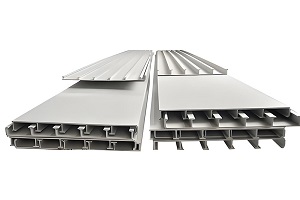- Home
- Fiberglass Profiles
Fiberglass Profiles Shipped Fast from GangLong Fiberglass
GangLong Fiberglass offers cost-effective corrosion-resistant profiles and the most complete line of pultruded fiberglass profiles.
GangLong Fiberglass offers the industry’s most comprehensive selection of pultruded fiberglass structural profiles, including fiberglass profiles, wide flange beams, I-beams, square tubing, flat sheets, plates, threaded rods, and FRP hardware. With an extensive inventory, GangLong Fiberglass can fulfill immediate needs and source specific fiberglass profiles as required and ensures availability with in-stock items ready for same-day shipping.
Pultruded Fiberglass Composite profiles are made from fiberglass reinforcements combined with thermosetting polyester or vinyl ester resin systems, resulting in over 100 standard shapes. These profiles, often referred to as fiberglass reinforced polyester FRP, offer excellent strength, corrosion resistance, and durability, making them ideal for various industrial applications. By using fiberglass reinforced polyester FRP, manufacturers can create components that are lightweight, yet strong enough to withstand harsh environments, providing long-term performance in settings like construction, infrastructure, and chemical plants. These profiles feature a surface veil to enhance corrosion and UV resistance. Fiberglass Profiles are advanced composites known for their corrosion resistance, lightweight nature, and structural strength, making them ideal for diverse applications in construction, aerospace, and industrial settings.
Simplifying Your Life: Key Functionalities

| Attribute | Description |
|---|---|
| Applications | Industry, construction, corrosion environment, electrical equipment, stairs, handrails, fences, agricultural greenhouse, pool cover systems, etc. |
| Technique | Pultrusion, molding process. |
| Place of Origin | Hebei, China |
| Brand Names | GangLong Fiberglass |
| Surface Treatment | Smooth, mat surface, gritted, UV-resistant, machine process, customized. |
| Processing Services | Cutting, bending, welding, punching, molding, sharpening, drilling, painting. |
| Materials | Fiberglass Reinforced Plastic (FRP), resin (ORP/ISO/VINYL), unsaturated polyester, E-glass, fiberglass yarn with resin and filler. |
| Colors | Optional/customized (white, black, yellow, green, etc.). |
| Shapes and Sizes | Customizable shapes and sizes: square tubes, section bars, rods, hollow tubes, cable trays. |
| Advantages | Anti-corrosion, non-conductive, fireproof, waterproof, lightweight, insulation, anti-aging, flexible. |
| Glass Type | E-glass. |
| Density | 1.9–2.1 g/cm³. |
| Fiberglass Content | 65%–70%. |
| Certificates | ISO9001 certified. |
News
- Exploring the Benefits of Carbon Fiber Apparel
- How to Work with Carbon Fiber Successfully
- Carbon Fiber Suit: The Future of Lightweight Armor
- Is Carbon Fiber Armor the Future of Protection?
- Why White Carbon Fiber is Popular in Automotive Design
- Transparent Carbon Fiber Sheets: Strength Meets Clarity in Design
- Chopped Carbon Fiber Mat for Lightweight Reinforcement
- Carbon Fiber EG Hatch: Upgrade Your Civic Today
- The Benefits of Using Structural Carbon Fibre in Engineering
- How Many Layers of Layered Carbon Fiber Are Needed?
Thank you for your interest in our products. To receive our pricelist or for any inquiries, please fill out the form below. We will get back to you within 24 hours.
Size of Fiberglass Profiles
Fiberglass profiles are commonly used in various industries for applications like structural supports, cable trays, gratings, and more. The typical sizes of fiberglass profiles vary depending on the type of profile, intended use, and the manufacturing standards. Here’s an overview of the most common fiberglass profile types and their typical sizes:
Fiberglass Channels
- Width: Typically range from 50 mm to 200 mm (2 to 8 inches).
- Height: Common sizes range from 50 mm to 300 mm (2 to 12 inches).
- Wall Thickness: Varies from 2 mm to 10 mm (0.08 to 0.4 inches).
Fiberglass channels are often used in structural and electrical applications, including cable trays or support frames.
Fiberglass Rectangular Tubes
- Width: 30 mm to 150 mm (1.2 to 6 inches).
- Height: 30 mm to 300 mm (1.2 to 12 inches).
- Wall Thickness: Typically ranges from 2 mm to 8 mm (0.08 to 0.3 inches).
These profiles are often used for frames, brackets, and other structural components.
Fiberglass I-Beams (or H-Beams)
- Width: 50 mm to 250 mm (2 to 10 inches).
- Height: 100 mm to 400 mm (4 to 16 inches).
- Flange Thickness: Generally between 5 mm and 12 mm (0.2 to 0.5 inches).
I-beams are typically used in heavy-duty structural applications, offering a high strength-to-weight ratio.
Fiberglass Angle Profiles
- Leg Length: From 25 mm to 100 mm (1 to 4 inches).
- Thickness: Typically 3 mm to 10 mm (0.12 to 0.4 inches).
Angle profiles are versatile and used for reinforcement or framing.
Fiberglass Square and Round Tubes
- Square Tubes: Sizes from 25 mm to 100 mm (1 to 4 inches) on each side.
- Round Tubes: Diameter typically ranges from 20 mm to 150 mm (0.8 to 6 inches).
- Wall Thickness: Varies from 2 mm to 10 mm (0.08 to 0.4 inches).
These profiles are used in various structural applications, especially when strength and corrosion resistance are important.
Fiberglass Grating Profiles
- Thickness: Common thicknesses include 25 mm, 38 mm, and 50 mm (1, 1.5, and 2 inches).
- Width: Typically 30 mm to 60 mm (1.2 to 2.4 inches) for the load-bearing sections.
- Length: Custom lengths, with typical panels being 1200 mm to 3000 mm (47 to 118 inches) long.
Fiberglass grating is often used in flooring, platforms, and walkways.
Fiberglass Rebar (Reinforcing Bar)
- Diameter: Typically 6 mm to 16 mm (0.24 to 0.63 inches), with some variants reaching up to 25 mm (1 inch).
- Length: Usually manufactured in lengths of 2 m to 6 m (6.5 ft to 20 ft), but can be custom-cut.
Fiberglass rebar is used for reinforcement in concrete structures, offering high corrosion resistance.
Fiberglass Ladders and Ladder Rails
- Width: Ladder rails generally range from 40 mm to 120 mm (1.6 to 4.7 inches).
- Height: Ladder side rails typically range from 200 mm to 400 mm (8 to 16 inches).
Ladders made from fiberglass profiles are often used in industrial, commercial, and safety-related applications where electrical insulation is important.
Typical Sizes
- Width: 25 mm to 300 mm (1 to 12 inches)
- Height: 50 mm to 400 mm (2 to 16 inches)
- Wall Thickness: 2 mm to 10 mm (0.08 to 0.4 inches)
- Length: Often custom or in panels of 1200 mm to 3000 mm (47 to 118 inches)
These sizes can vary depending on the manufacturer and specific application requirements. Additionally, fiberglass profiles can be customized to meet specific load-bearing capacities, environmental resistance (e.g., to UV or chemicals), and design specifications.
Overview of Fiberglass Resin Grades and Their Applications
500 Standard Grade – Standard Non-Fire Retardant Polyester
The 500 Standard Grade is a general-purpose isophthalic polyester resin system, designed to offer excellent corrosion resistance in various environments. It includes a UV inhibitor that helps protect the material from degradation caused by sunlight exposure, ensuring long-lasting performance. This grade is ideal for a wide range of applications where fire resistance is not a primary concern, but durability and corrosion resistance are key. The resin system is particularly useful in settings where exposure to the elements is common, and the color of this grade is olive green.
525 FR/UV Grade – Fire Retardant Polyester
The 525 FR/UV Grade is a fire-retardant isophthalic polyester resin system, designed to enhance safety by reducing the spread of fire. This grade incorporates a UV inhibitor to protect the resin from sunlight and environmental degradation. It also provides good corrosion resistance, making it an excellent choice for industrial and commercial applications where fire safety is a concern. The colors of this grade are dark gray and yellow, offering a visually distinguishable option for environments requiring high safety standards.
625 VE Grade – Vinylester Fire Retardant
The 625 VE Grade features a premium vinylester resin system, combining fire-retardant properties with superior corrosion resistance. This resin system is ideal for demanding environments where both fire safety and resistance to aggressive chemicals or corrosion are required. The 625 VE grade includes a UV inhibitor, ensuring long-lasting performance even under harsh outdoor conditions. It is especially suitable for critical infrastructure applications, such as handrails and fixed ladders, where both strength and safety are paramount. The colors of this grade are beige and yellow, with specific components like handrails and ladders often featuring yellow for enhanced visibility.
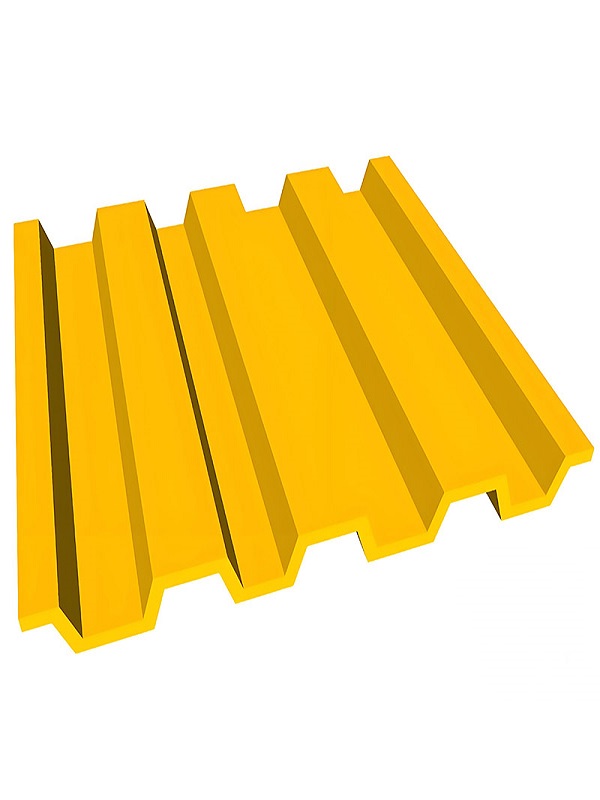
Types of Fiberglass Profiles
Fiberglass Extrusions
Definition and Process: Fiberglass extrusions are profiles created by forcing molten fiberglass through a die to shape it into continuous lengths of specific cross-sectional designs. This process involves mixing glass fibers with resin and then extruding the mixture to form various profiles. In some applications, products like fiber glass duct board can also be used to complement the composite profiles, offering enhanced thermal insulation and strength. The combination of fiberglass reinforcements with resin creates highly durable and versatile materials, which can be shaped into different profiles to meet the specific needs of industries such as HVAC, construction, and manufacturing. The extrusion process ensures uniformity and precision in the resulting profiles.
Applications: Fiberglass extrusions are widely used in diverse industries due to their strength, lightweight nature, and resistance to corrosion. Common applications include structural components in construction, frames in manufacturing, and protective housings for electrical components.
GRP Pultruded Profiles
Definition and Benefits: Glass Reinforced Plastic (GRP) pultruded profiles are made by pulling continuous fibers through a resin bath and then through a heated die to cure the profile into its final shape. This process creates profiles with high strength-to-weight ratios, excellent chemical resistance, and durability.
Uses: GRP pultruded profiles are ideal for structural reinforcement in demanding environments. They are used in applications such as support beams, columns, and infrastructure components where high strength and resistance to environmental factors are crucial.
GRP Angle Profile
Overview: GRP angle profiles are a type of fiberglass profile with an angular cross-section. They are known for their exceptional strength and resistance to corrosion, making them suitable for various structural and reinforcement applications. These profiles are lightweight yet robust, providing a reliable solution for both load-bearing and bracing needs.
Applications: GRP angle profiles are commonly used in construction for framing and bracing applications, including in staircases, bridges, and industrial supports. Their ability to withstand harsh conditions makes them a preferred choice in outdoor and industrial environments.
GRP Handrails
Features: GRP handrails are designed to offer durability and safety with minimal maintenance. They are resistant to corrosion, chemicals, and environmental damage, making them a long-lasting choice for safety applications. GRP handrails are also lightweight, which simplifies installation and handling.
Applications: GRP handrails are widely used in various settings, including staircases, walkways, and railings. They are particularly useful in environments where traditional materials might fail due to corrosion or heavy wear, such as in industrial sites, outdoor areas, and marine applications.
Advantages of Fiberglass Profiles
Strength and Durability
Fiberglass profiles provide outstanding strength and durability. Despite being lighter than materials like steel and aluminum, they offer a high strength-to-weight ratio. This makes them ideal for applications that require both strength and reduced weight. Unlike steel, fiberglass is not prone to corrosion, and it often outperforms aluminum in harsh environments, offering a longer service life with minimal maintenance.
Corrosion Resistance
One of the primary advantages of fiberglass profiles is their resistance to corrosion. They maintain their structural integrity even in environments exposed to harsh chemicals, extreme weather conditions, or marine environments. Unlike metals that degrade over time, fiberglass profiles resist rust and deterioration, reducing maintenance costs and increasing the lifespan of the product.
Lightweight Nature
Fiberglass profiles are significantly lighter than traditional materials like steel and concrete. This reduces handling and transportation costs, making installation faster and more efficient. The reduced weight also minimizes the load on supporting structures, which is particularly important when weight constraints are a consideration. These factors contribute to lower labor and installation costs, benefiting both project timelines and budgets.
Weather and UV Resistance
Fiberglass profiles are highly resistant to weathering and UV degradation, withstanding temperatures from -40°C to +80°C without performance loss. This makes them suitable for outdoor applications where environmental exposure is a factor. Additionally, they are resilient to seawater and other atmospheric conditions, ensuring long-term performance in challenging environments.
Electrical Insulation
Fiberglass profiles possess excellent electrical insulation properties. They are suitable for use in electrical structures, such as those found in railway systems and power plants, as they are effective in low and medium voltage applications, providing a safe and reliable option for electrical infrastructure.
Ease of Use
Fiberglass profiles are easier to process than metals like steel, allowing for quick and efficient onsite fabrication. Their ease of use, combined with their excellent mechanical properties, makes them a versatile and efficient solution for custom structural needs, offering significant advantages over traditional materials.
Applications of Fiberglass Profiles
Industrial Uses
Structural Reinforcement: Fiberglass profiles play a crucial role in structural reinforcement across various industries. Their strength and durability make them ideal for enhancing the structural integrity of buildings, bridges, and industrial equipment. In industrial settings, fiberglass profiles are often used to reinforce existing structures, providing additional support and stability where needed. Their lightweight nature, combined with their high strength, allows them to be used in load-bearing applications without significantly increasing the weight of the structure.
Custom Solutions: Many industries benefit from custom fiberglass profiles tailored to specific needs. For example, in the aerospace industry, specialized profiles are designed to meet the stringent requirements of aircraft construction. In the chemical processing industry, custom profiles are used for creating resistant components that can withstand harsh chemical environments. These custom solutions help address unique challenges and requirements, providing tailored support and performance where standard materials might fall short.
Construction and Infrastructure
Building and Safety Applications: In construction, fiberglass profiles are widely utilized for various building and safety applications. They are commonly used to create durable and low-maintenance handrails, staircases, and structural supports. For instance, fiberglass handrails provide a safe, corrosion-resistant option for walkways and stairs, ensuring long-term safety and durability. Additionally, fiberglass profiles are used in constructing structural components such as beams and supports, offering strength without the weight and maintenance issues associated with traditional materials like steel or wood.
Recreational and DIY Projects
Versatility in Personal Projects: Fiberglass profiles are not limited to industrial and construction uses; they also find applications in recreational and DIY projects. For hobbyists and DIY enthusiasts, fiberglass profiles offer a versatile material for various personal projects. They are used in crafting custom boat components, creating lightweight frames for outdoor furniture, and building durable shelving units. The ease of customization and the material’s adaptability make fiberglass profiles a popular choice for personal projects that require both strength and aesthetic appeal.
Fiberglass Profiles Buying Guide
Understand the Types of Fiberglass Profiles
Fiberglass profiles come in various types, including pultruded, extruded, and hand-laid profiles. Pultruded profiles are highly durable and corrosion-resistant, while extruded profiles are ideal for complex designs. Hand-laid profiles offer customization for unique applications. Choose the type based on your specific needs, whether for strength, geometry, or ease of manufacturing.
Consider the Material Properties
Fiberglass profiles are strong, lightweight, and corrosion-resistant, making them ideal for harsh environments. Consider the resin system for fire resistance and environmental suitability. Fiberglass profiles perform well in chemical exposure and extreme weather conditions, offering a longer lifespan than traditional materials like steel and aluminum.
Customization Options
Fiberglass profiles are highly customizable in shape, size, and design. Manufacturers can tailor profiles to fit specific project requirements, such as unique cross-sections or dimensional specifications. Customization makes fiberglass versatile for diverse industries like construction, aerospace, and automotive, where precise specifications are critical.
Consider the Environment and Application
When choosing fiberglass profiles, consider the environmental conditions, such as UV exposure, temperature extremes, and corrosive elements. Fiberglass is ideal for marine, chemical, or outdoor applications due to its resistance to corrosion, UV degradation, and environmental stress. Ensure the profile meets the demands of your specific environment.
Quality and Standards
Ensure that fiberglass profiles meet industry standards like ASTM or ISO certifications, indicating rigorous testing for strength, durability, and corrosion resistance. Quality assurance ensures that the profiles will meet performance requirements and safety standards in demanding applications, offering peace of mind regarding their reliability.
Evaluate the Manufacturer
Choose a manufacturer with experience and a reputation for high-quality products. Look for excellent customer support, timely delivery, and customization capabilities. An experienced manufacturer can provide the right solution for your application, ensuring the fiberglass profiles meet your needs and deadlines effectively.
Price and Cost Considerations
While fiberglass profiles may have higher initial costs compared to traditional materials, they offer long-term savings due to their durability and low maintenance. They last longer and require fewer replacements, making them a cost-effective choice in the long run. Factor in both upfront costs and long-term value when making your decision.
Roofing and Siding Fiberglass Profiles
Roofing and siding fiberglass profiles are versatile building materials made from fiberglass-reinforced plastics (FRP). These profiles are specifically designed for durability, strength, and resistance to environmental factors, making them ideal for a variety of applications in construction and industrial settings. Below is a detailed exploration of their features, benefits, and applications.
Key Features of Fiberglass Profiles for Roofing and Siding
Lightweight and Strong:
Fiberglass profiles are lightweight yet exceptionally strong, offering high tensile strength and structural integrity. This combination allows for easy handling during installation while ensuring long-term performance.
Corrosion Resistance:
Unlike traditional materials such as steel or wood, fiberglass profiles are highly resistant to corrosion. They can withstand exposure to moisture, chemicals, and UV radiation without deteriorating, making them ideal for harsh environments.
Weather Resistance:
Designed to endure extreme weather conditions, fiberglass profiles maintain their shape and functionality under heavy rain, snow, or prolonged sunlight exposure.
Thermal and Electrical Insulation:
These profiles provide excellent insulation properties, offering resistance to heat and acting as non-conductive materials, which enhances safety in electrical installations.
Customizable Designs:
Fiberglass profiles are available in a variety of shapes, sizes, and colors. This versatility allows for customization to meet specific architectural and functional requirements.
Benefits of Using Fiberglass Profiles in Roofing and Siding
Longevity:
With minimal maintenance, fiberglass profiles have a long service life, reducing replacement and repair costs over time.Eco-Friendly Options:
Many fiberglass profiles are made from recyclable materials, aligning with sustainable construction practices.Aesthetic Appeal:
Their smooth surface and availability in different finishes and colors enhance the visual appeal of buildings, making them suitable for both industrial and residential projects.Ease of Installation:
The lightweight nature of fiberglass profiles makes them easier to transport and install, reducing labor time and costs.
Applications of Fiberglass Profiles for Roofing and Siding
Industrial Buildings:
Factories and warehouses often use fiberglass roofing and siding profiles due to their durability and resistance to chemicals and moisture.Agricultural Structures:
Barns, greenhouses, and poultry houses benefit from the insulating properties and weather resistance of fiberglass profiles.Residential Construction:
Homes use fiberglass siding profiles for their aesthetic versatility and low maintenance requirements.Commercial Buildings:
Retail stores and office buildings incorporate these profiles for modern and sleek facades that also provide excellent protection against environmental factors.Infrastructure Projects:
Fiberglass profiles are used in bridges, tunnels, and other infrastructure to provide durable roofing and cladding solutions.
Maintenance and Longevity
Fiberglass profiles for roofing and siding require minimal maintenance. Routine cleaning with water and mild detergents helps preserve their appearance. Inspections should be conducted periodically to ensure no damage has occurred, although their inherent strength minimizes the likelihood of issues.
Roofing and siding fiberglass profiles represent a modern, efficient, and durable solution for a wide range of building needs. Their combination of strength, lightweight design, and resistance to environmental factors ensures they meet the demands of both commercial and residential construction projects. By opting for fiberglass profiles, builders and architects can achieve a balance between functionality, longevity, and aesthetic appeal.
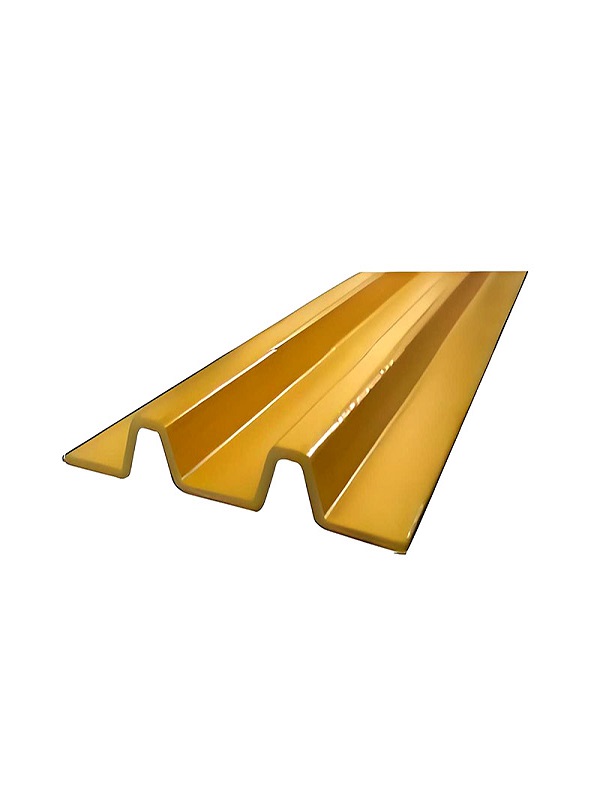

Composite and Pultruded Fiberglass Profiles
Composite and pultruded fiberglass profiles are advanced materials engineered for high performance in various industries. These profiles combine lightweight characteristics with exceptional strength, making them a preferred choice for structural and non-structural applications. Here’s a comprehensive overview of their composition, manufacturing process, properties, and applications.
What Are Composite and Pultruded Fiberglass Profiles?
Composite Fiberglass Profiles are materials made from a combination of fibers (such as glass fibers) embedded in a resin matrix. The synergy between the fibers and resin results in a material that is both strong and lightweight, ideal for applications requiring high strength-to-weight ratios.
Pultruded Fiberglass Profiles are a type of composite profile manufactured through a continuous pultrusion process. This process ensures consistent quality and uniform cross-sectional shapes, producing profiles like I-beams, channels, rods, and tubes.
Manufacturing Process
Pultrusion Process for Fiberglass Profiles:
Reinforcement Preparation:
Glass fibers or mats are pulled from spools and aligned to form the desired profile.
Resin Impregnation:
The fibers are impregnated with a thermosetting resin, such as polyester, vinyl ester, or epoxy. Additives can be included for enhanced properties like fire resistance or UV protection.
Shaping:
The resin-soaked fibers are pulled through a heated die that shapes and cures the material into the final profile.
Cutting and Finishing:
The continuous profile is cut to the required lengths and finished for application-specific requirements.
Key Properties of Composite and Pultruded Fiberglass Profiles
High Strength-to-Weight Ratio:
These profiles offer exceptional strength while being lightweight, making them easy to handle and install.
Corrosion Resistance:
Resistant to moisture, chemicals, and environmental degradation, they are ideal for harsh environments like marine or chemical processing facilities.
Electrical Insulation:
Non-conductive and thermally stable, they are widely used in electrical and thermal insulation applications.
Dimensional Stability:
Pultruded profiles maintain their shape and structural integrity under varying temperatures and loads.
Customizable:
Available in a wide range of shapes, sizes, and finishes, they can be tailored for specific applications.
Common Shapes of Pultruded Fiberglass Profiles
- I-beams
- Channels (C-sections)
- Angles
- Flat bars
- Rods
- Tubes (round and square)
- Plates and grating panels
Applications of Composite and Pultruded Fiberglass Profiles
Construction:
Structural components like beams, railings, ladders, and walkways in industrial and commercial buildings.
Transportation:
Used in lightweight and corrosion-resistant structures for vehicles, ships, and trains.
Energy Sector:
Utility poles, cable trays, and support structures in electrical grids and renewable energy installations.
Chemical and Wastewater Plants:
Ideal for platforms, handrails, and storage tanks due to their resistance to chemicals and corrosion.
Infrastructure:
Bridges, drainage systems, and fencing solutions where durability and lightweight materials are critical.
Marine Applications:
Decking, gangways, and boat hulls, benefiting from their moisture resistance and lightweight nature.
Advantages Over Traditional Materials
- Versus Steel: Corrosion resistance, lightweight, and no need for periodic painting or coating.
- Versus Aluminum: Better strength-to-weight ratio and resistance to environmental stress cracking.
- Versus Wood: No rotting, warping, or susceptibility to pests.
Maintenance and Longevity
Composite and pultruded fiberglass profiles require minimal maintenance. They resist environmental damage and retain their mechanical properties over decades, ensuring long service life and cost efficiency.
Composite and pultruded fiberglass profiles are revolutionizing industries with their unique blend of durability, strength, and versatility. From construction to energy, their applications are expanding as industries recognize the benefits of lightweight, corrosion-resistant materials. These profiles are a forward-thinking choice for sustainable, high-performance designs.
Reinforced Plastic Fiberglass Profiles
Reinforced plastic fiberglass profiles, also known as fiberglass-reinforced plastic (FRP) profiles, are advanced composite materials that combine the strength of fiberglass with the durability of plastic resins. These profiles are engineered for demanding applications requiring high mechanical performance, corrosion resistance, and long-term reliability. Below is an in-depth overview of their features, manufacturing processes, applications, and advantages.
What Are Reinforced Plastic Fiberglass Profiles?
Reinforced plastic fiberglass profiles are structural or functional components made by embedding continuous glass fibers into a resin matrix. The combination of these materials creates a composite that offers superior strength, stiffness, and durability while remaining lightweight. These profiles are commonly used as alternatives to traditional materials like steel, aluminum, or wood.
Key Features
High Strength and Stiffness:
The glass fibers provide excellent tensile and compressive strength, while the plastic resin ensures stiffness and dimensional stability.Corrosion Resistance:
These profiles resist damage from moisture, chemicals, and salt, making them suitable for environments like marine, chemical, and industrial facilities.Lightweight:
Despite their strength, they are significantly lighter than metals, making them easier to transport, handle, and install.Electrical Insulation:
FRP profiles are non-conductive, which makes them safe for electrical and thermal insulation applications.Customizable Designs:
Available in various shapes, sizes, colors, and finishes, they can be tailored to specific functional or aesthetic requirements.
Manufacturing Processes
Reinforced plastic fiberglass profiles are typically manufactured through one of the following processes:
Pultrusion:
A continuous process where fibers are pulled through a resin bath and then shaped and cured in a heated die. This method produces profiles with consistent quality and cross-sectional dimensions.Compression Molding:
Used for creating complex shapes, this process involves pressing the fibers and resin into a mold under high pressure and heat.Hand Lay-Up and Spray-Up:
Fibers are manually laid in a mold and impregnated with resin. This method is suitable for custom, low-volume production.Filament Winding:
Ideal for cylindrical shapes like pipes or tanks, this process involves winding resin-impregnated fibers around a rotating mandrel.
Common Shapes and Types of Profiles
- Structural Profiles: I-beams, C-channels, angles, tubes, rods, and flat bars.
- Panels and Sheets: Flat panels, corrugated sheets, and grating.
- Custom Shapes: Complex geometries designed for specific industrial needs.
Applications of Reinforced Plastic Fiberglass Profiles
Construction and Infrastructure:
Used for beams, columns, bridges, walkways, and staircases due to their strength and corrosion resistance.Chemical and Wastewater Treatment:
Ideal for platforms, railings, and covers in corrosive environments.Electrical and Communication:
Utility poles, cable trays, and insulation components benefit from their non-conductive properties.Marine and Offshore:
Decking, handrails, and boat components due to their lightweight and moisture resistance.Transportation:
Used in lightweight components for vehicles, trains, and aircraft, contributing to fuel efficiency and performance.Agriculture:
Silo panels, greenhouse structures, and fencing take advantage of their weather resistance.
Advantages of Reinforced Plastic Fiberglass Profiles
Long Service Life:
Minimal maintenance requirements and resistance to environmental factors ensure durability and cost savings over time.Non-Magnetic:
Suitable for applications where magnetic interference is a concern.Eco-Friendly:
Many FRP profiles are recyclable, contributing to sustainable construction practices.Fire Retardancy:
Available with flame-resistant resins for enhanced safety.Versatility:
Applicable across a wide range of industries and customizable for specific requirements.
Maintenance and Care
Reinforced plastic fiberglass profiles require little maintenance. Regular cleaning and periodic inspections for mechanical wear or damage are sufficient to maintain their performance. Protective coatings or additives can enhance UV resistance for outdoor applications.
Reinforced plastic fiberglass profiles are a modern solution for structural and functional challenges across industries. Their combination of strength, durability, and adaptability makes them a superior choice over traditional materials. Whether for infrastructure, marine, or industrial uses, these profiles provide a sustainable, cost-effective, and high-performance alternative.
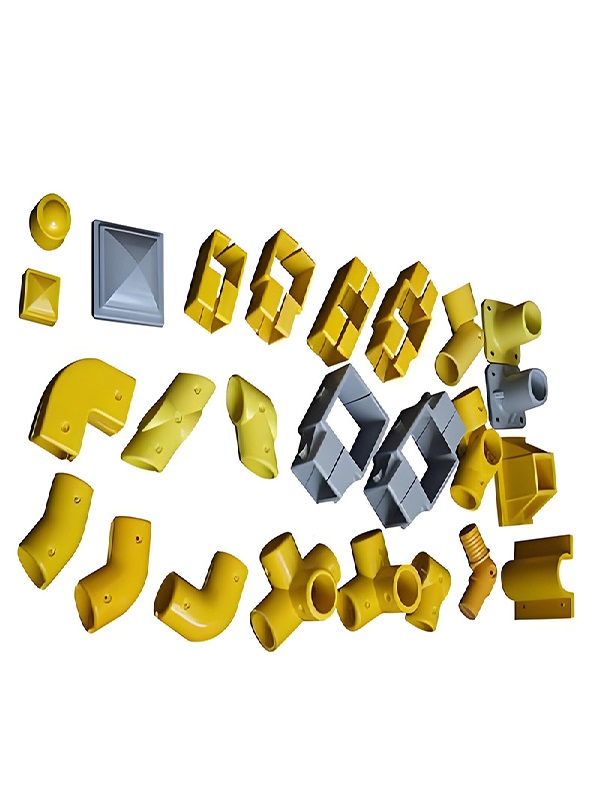
GangLong Fiberglass Supply Fiberglass Profiles
GangLong Fiberglass offers one of the most comprehensive product lines in the industry, featuring three distinct resin series of pultruded fiberglass structural profiles. Whether you require standard profiles or custom solutions, GangLong Fiberglass has the capability to meet your needs. If a specific product is not readily available, we will source it and ensure prompt delivery.
GangLong Fiberglass specializes in pultruded fiberglass composite sheets, profiles, and structural shapes. These are crafted using proprietary combinations of fiberglass reinforcements and thermoset polyester or vinyl ester resin systems, resulting in over 100 standard shapes.
All pultruded fiberglass composite profiles include a surface veil, providing enhanced corrosion resistance, UV protection, and preventing fiberglass exposure during use.
Key Advantages
GangLong Fiberglass products are designed with multiple benefits to address various industrial, construction, and environmental needs:
Lightweight and Strong
- Fiberglass structures are lightweight yet robust, offering installation efficiency.
- Despite its light weight (1/4 the density of steel), fiberglass rivals the strength of traditional materials.
High Strength and Stiffness
- Fiberglass profiles match the strength of steel, aluminum, and wood.
- Weighs only 20% of concrete and 40% of steel, making it an efficient choice for structural applications.
Corrosion Resistance
- Exceptionally durable in corrosive environments.
- Long service life with minimal maintenance.
Weather Resistance
- UV-resistant, capable of withstanding temperatures from -40°C to +80°C without performance loss.
- Resistant to seawater and atmospheric effects, making it ideal for harsh outdoor conditions.
Electrical Insulation
- Excellent electrical insulation properties.
- Suitable for applications like railway tracks, power plants, and other electrical structures.
Ease of Processing
- Easier to process compared to metals like steel.
- Can be cut, drilled, and shaped on-site, similar to working with wood.
Thermal Insulation
- Superior thermal insulation compared to steel and aluminum.
Sustainability
- Manufactured using an energy-efficient pultrusion process.
- Lightweight and durable design reduces energy consumption and costs over its lifecycle.
GangLong Fiberglass not only provides standard solutions but also offers tailored designs to meet unique customer needs. Whether your project involves walkways, staircases, platforms, bridges, or other structural elements, our team works closely with you to develop the perfect solution.


